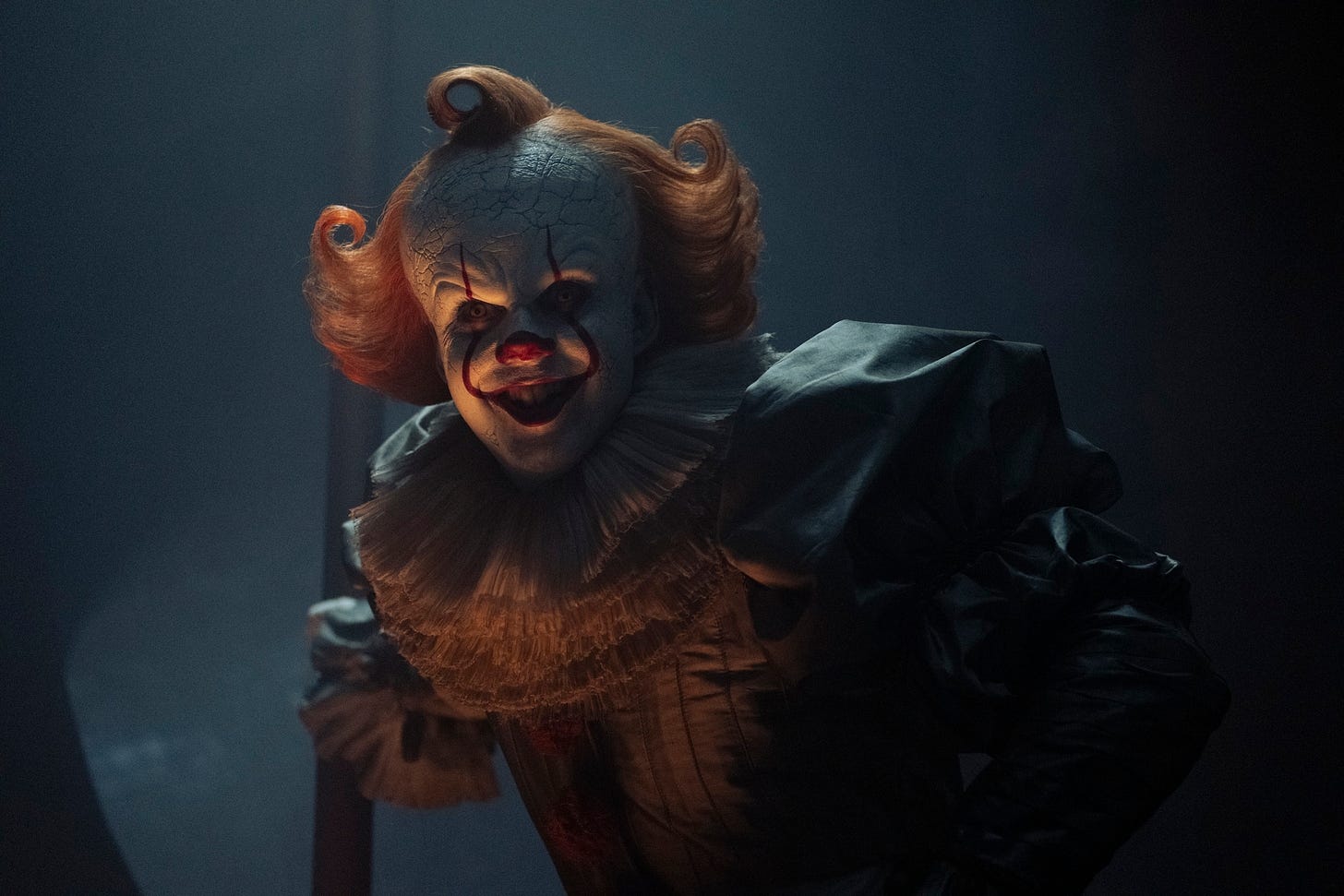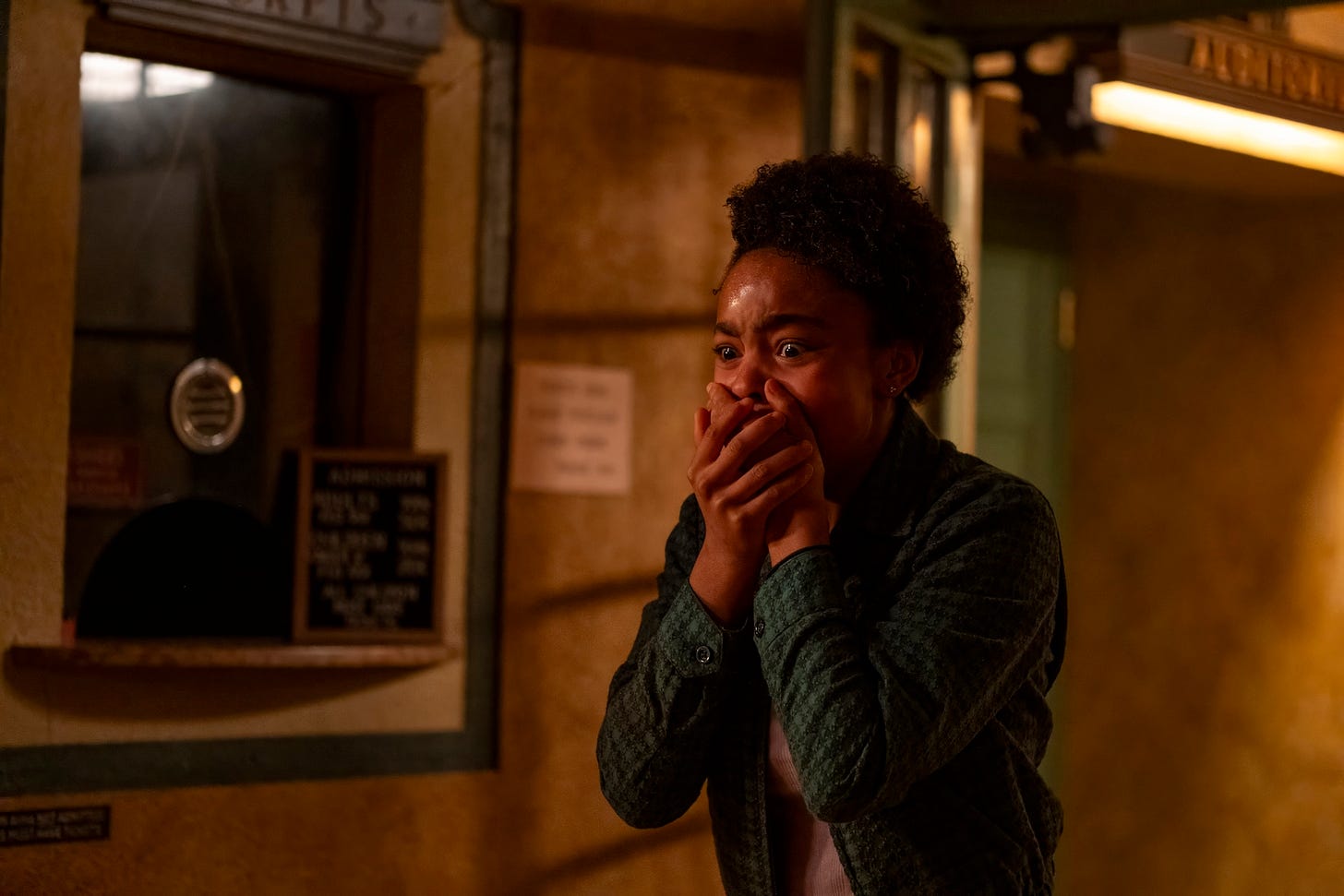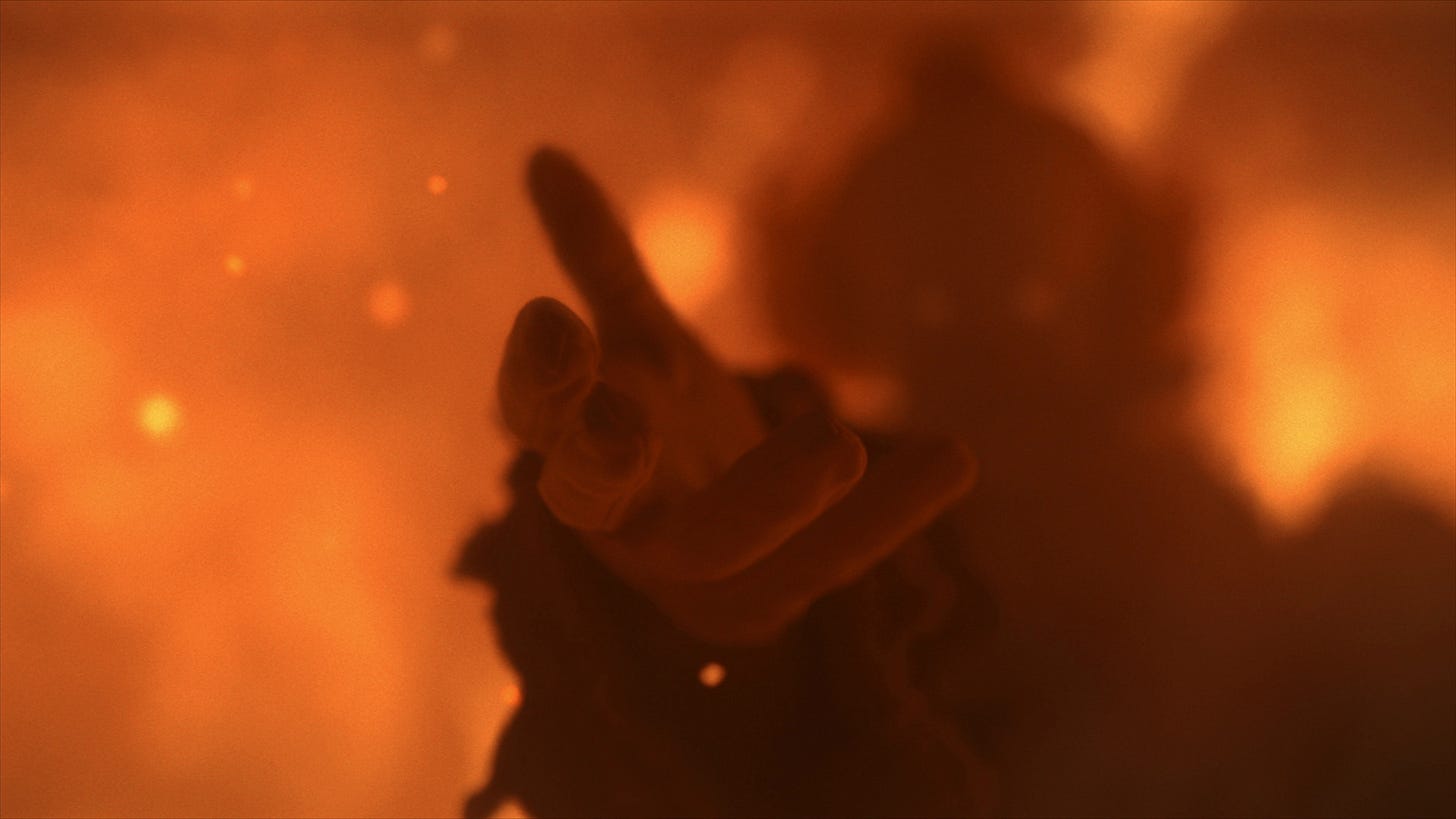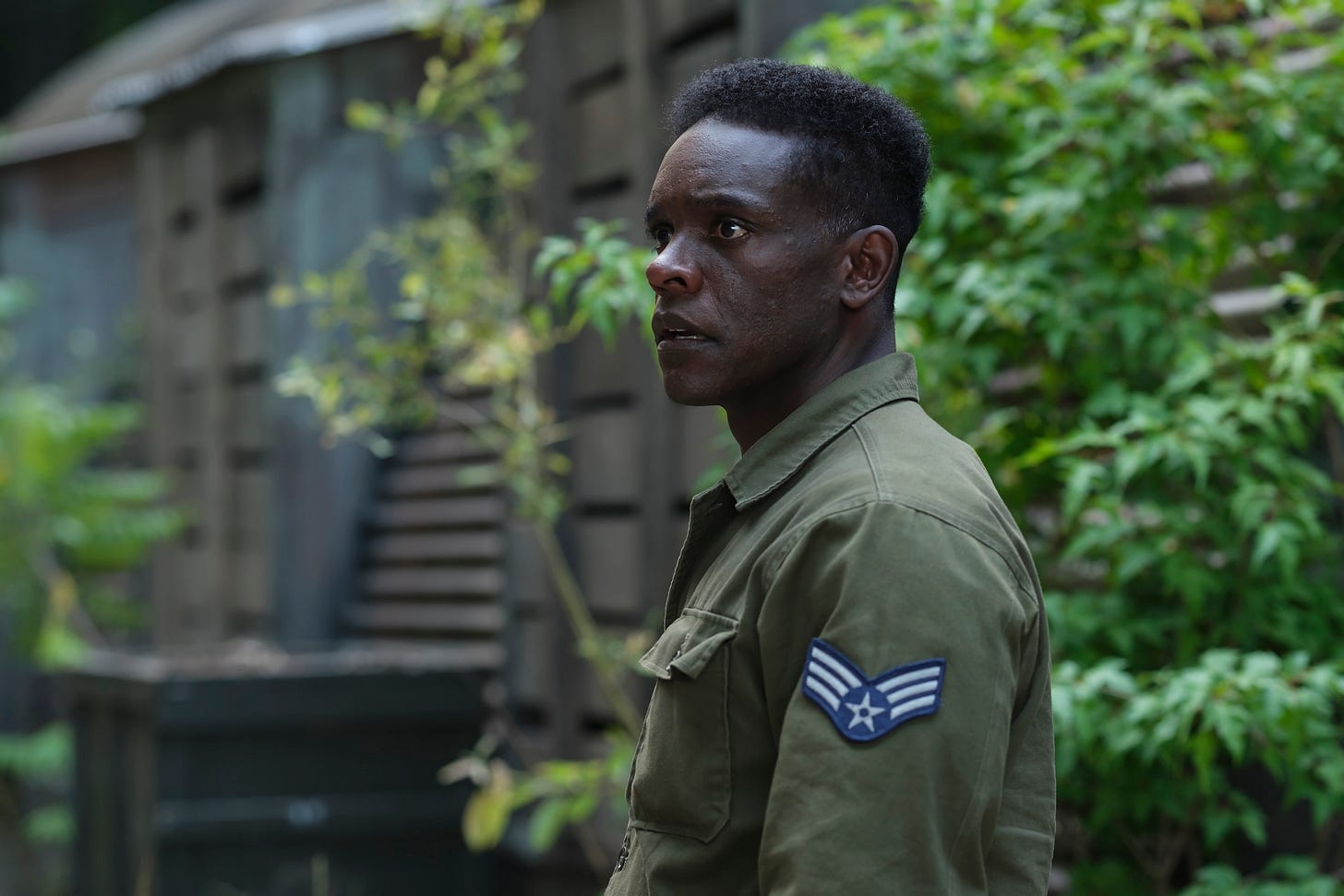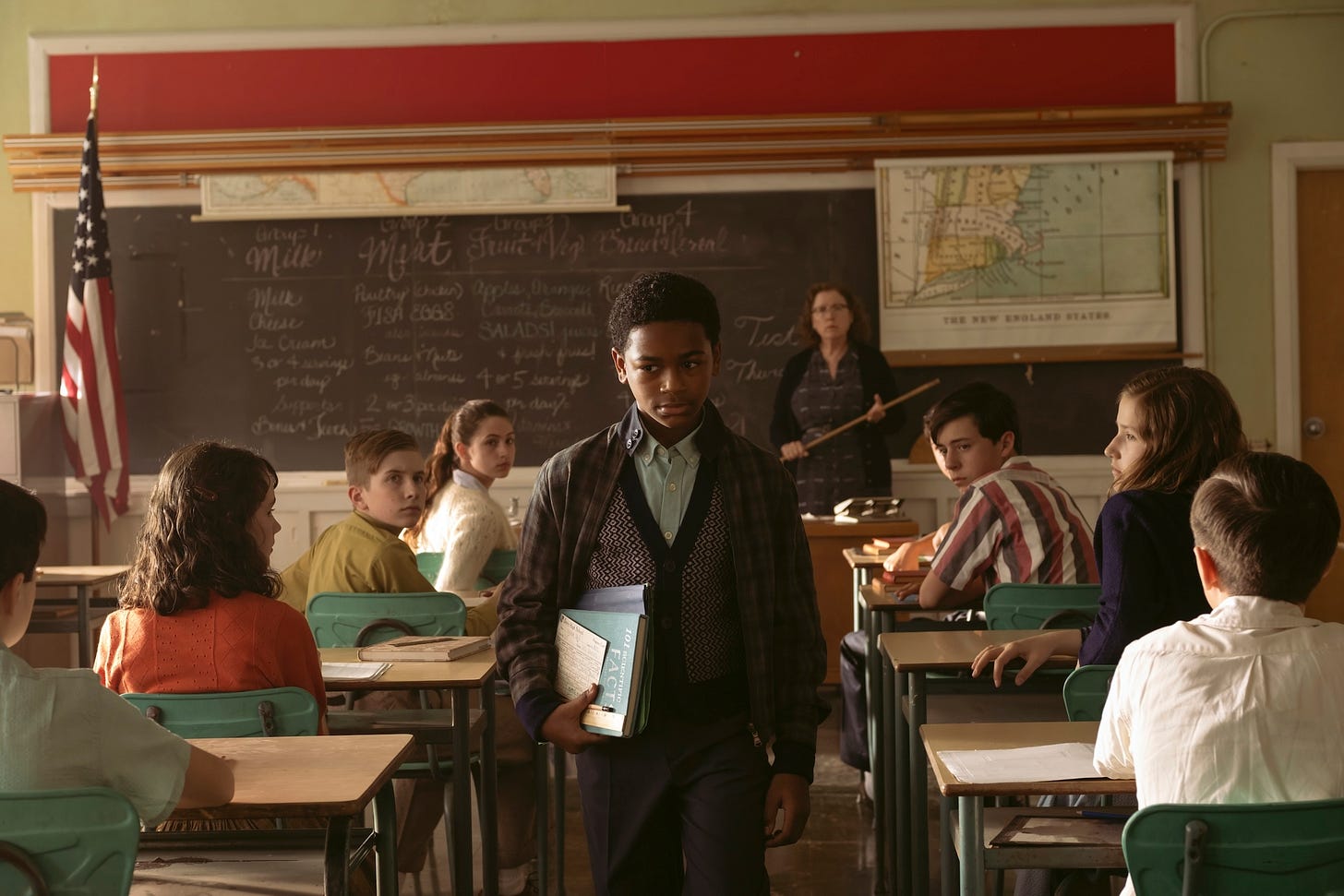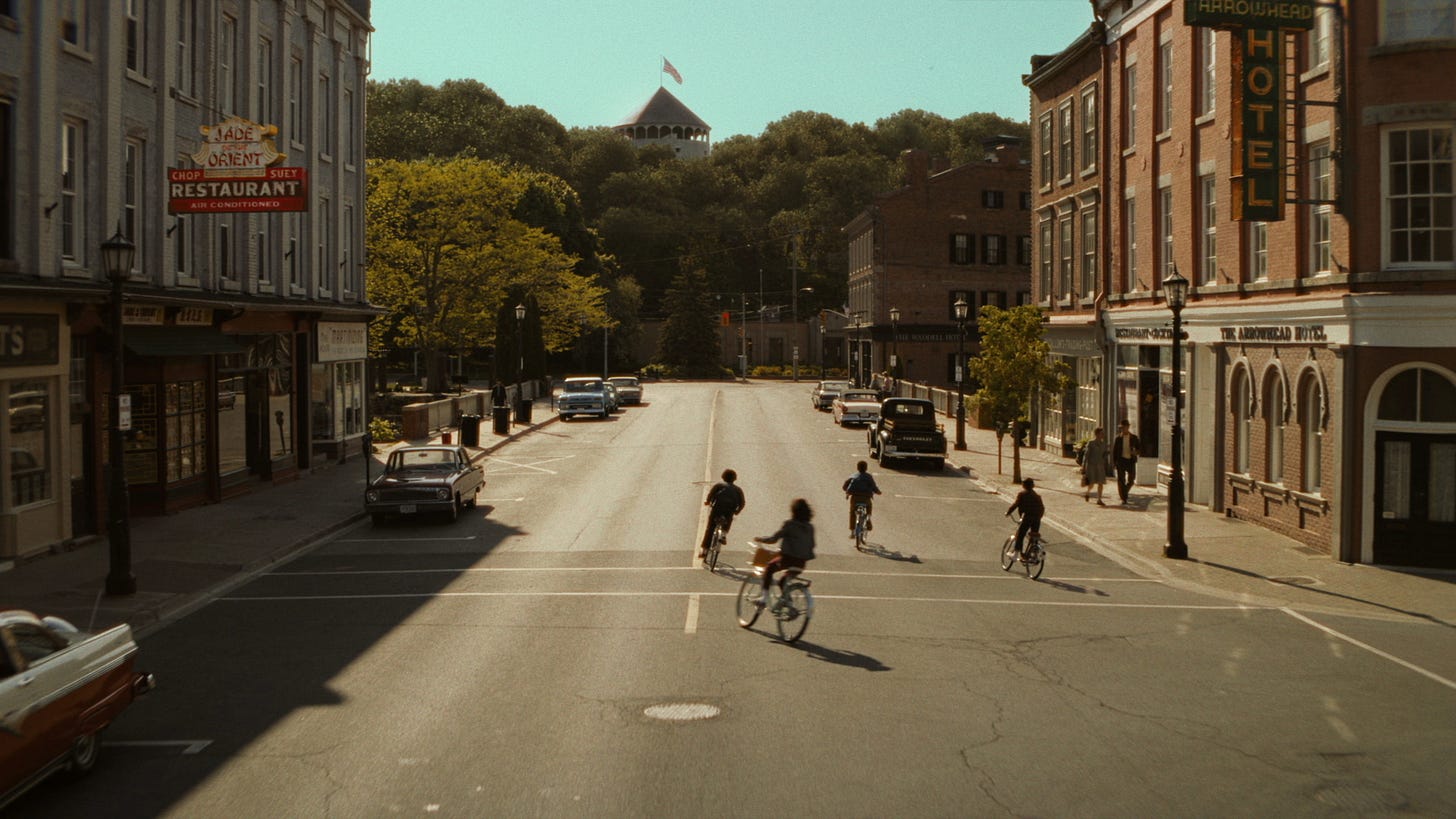Review: 'IT: Welcome to Derry'
Between children's fears, Cold War shadows and cosmic dread, Derry’s nightmares find new life
Bad things happen in Derry. The fictional town, a locus for all things strange and evil, was put on the map of Maine by horror master Stephen King, along with its siblings Castle Rock and Jerusalem’s Lot.
After first appearing in King’s short story “The Bird and the Album” in 1981, Derry has since appeared in many of the author’s works, such as Insomnia (1994), Dreamcatcher (2001), Bag of Bones (1998), 11/22/63 (2011), and most notably, It (1986).
Stephen King’s seminal novel It now stands as one of his most well-known and cherished works. Set in the small town of Derry between 1957 and 1958, and then 27 years later, between 1984 and 1985, it follows a group of friends as they confront an ancient, alien entity that slumbers beneath the town, waking every 27 years to feed on fear and death. While its true name is unknown, the entity is referred to as Pennywise, as it often takes the form of a sinister-looking clown.
Far more than a horror novel, It runs over 1,100 pages, delving deep into the story of Derry, its inhabitants, and its history. The book follows a group of friends: Bill Denbrough, aka “Stuttering Bill,” Ben Hanscom, Beverly Marsh, Richie “Trashmouth” Tozier, Eddie Kaspbrak, Stan Uris, and Mike Hanlon. In the first part, set in the late 1950s, we follow the friends as they investigate the disappearance of Bill’s younger brother. In the second half, set in the mid-1980s, the friends reunite in Derry to confront the reawakened evil once again.
As a celebrated horror masterpiece, it didn’t take long for a screen adaptation to emerge. In 1990, a two-part made-for-TV movie premiered, starring the indomitable Tim Curry as Pennywise. While the adaptation was a massive success in terms of viewership, its 215-page screenplay omitted much of King’s sprawling novel, understandably given its scale.
Another 27 years would pass before a new adaptation arrived. Director Andy Muschietti’s two-part theatrical version modernized the timeline, shifting the childhood story to the 1980s and the adult story to the 2010s. Bill Skarsgård, born for the role, took on Pennywise, giving the clown a more predatory, baroque presence. The films cemented Pennywise as a modern horror icon and set the stage for a deeper exploration of Derry’s cursed origins.
This brings us to IT: Welcome to Derry, an eight-episode series set in 1962, a few years after the events in the first half of King’s novel. It’s developed by the same creative team behind the recent films: director Andy Muschietti, producer Barbara Muschietti, and writer Jason Fuchs. Crucially, Bill Skarsgård returns as Pennywise the Dancing Clown.
The series unfolds through two parallel storylines. The first begins, as it always does in Derry, with the children. We meet a group of local kids, several already grappling with trauma and deep-seated fears. After a shocking tragedy strikes the town, they find themselves hunted by a force that feeds on their anxieties, manifesting as horrific visions and nightmares. Their effort to understand what’s happening becomes our entry point into the season’s sprawling narrative.
Meanwhile, at the local military airbase, Cold War paranoia is at a fever pitch, mirroring the global tension of 1962 as the world edges toward the Cuban Missile Crisis. Major Leroy Hanlon (Jovan Adepo) and fellow officer (Stephen Rider) join an air force obsessed with nuclear supremacy and haunted by the fear of annihilation.
They’re soon joined by the mysterious Dick Halloran (Chris Chalk), a name King fans will instantly recognize. It soon becomes clear that a top-secret government project is underway in Derry: the search for an unconventional weapon. This weapon, rumored to harness fear itself as a destructive force, lies buried nearby, and only Halloran’s unique gifts can sense it.
Our return to Derry is anything but pleasant. As in Muschietti’s previous It adaptations and in much of King’s best horror, the story thrives on contrast: the bright, wholesome facade of small-town life concealing a rotten underlayer where both supernatural and human horrors dwell. With children again at the heart of the story—and often the targets of those horrors—the dread feels immediate and personal.
Then there’s Pennywise, once more played with eerie brilliance by Bill Skarsgård. Wounded and dreaming of revenge after his defeat by the Losers’ Club, he lies dormant beneath Derry, his slumber growing restless as the military’s secret project stirs old energies. His influence begins to seep outward, infecting the town and its people once more.
Note: After writing this review, I realized that I got my timelines mixed up. IT: Welcome to Derry is, of course, connected to Andy Muschietti’s changed timeline. So the story about The Loser’s Club in King’s book is set a 27-year generation after the story of this series.
Some viewers might dismiss IT: Welcome to Derry as another prequel spin-off from a familiar title. But while Muschietti’s films were wildly successful, they only hinted at the vast mythology within King’s novel. Here, the creative team returns with the same atmosphere and creeping dread that defined those films, expanding the legend of Derry rather than retreading it.
The eight-episode format proves the series’ greatest strength. The films could only gesture toward Derry’s dark past and Pennywise’s recurring cycles of terror, erupting every 27 years in death and destruction. The show finally gives space to explore that history through flashbacks and deeper world-building, turning the town itself into a character—vivid, haunted, and utterly cursed.
IT: Welcome to Derry is horrifying, nightmare fuel that offers far more than cheap jump scares. Unbound by the story in King’s novel, Muschietti delivers scenes that will both haunt you and, at times, might make you wonder if everything is quite alright in the Muschietti household.
Developed by: Andy Muschietti, Barbara Muschietti & Jason Fuchs
Directed by: Andy Muschietti
Written by: Jason Fuchs
Starring: Bill Skarsgård, Jovan Adepo, Taylour Paige, Chris Chalk, Stephen Rider, James Remar, Amanda Christine, Clara Stack, Madeleine Stowe, Rudy Mancuso, Blake Cameron James
Streaming on: HBO / Max
Episodes watched: 5 of 8


